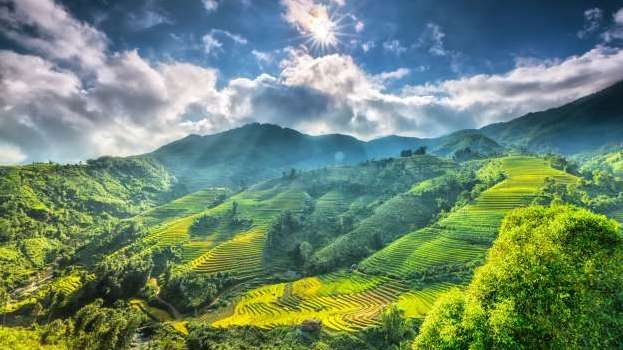


|
Sa Pa Accordingly, Sa Pa ranked 7th and Da Lat ranked 8th.
MSN wrote on Vietnam’s Sa Pa: "A popular tourist destination,
the region is known for its terraced rice fields and colonial-style houses.
The lush greenery is beautifully complemented by the variety of flowers in
spring.”
Meanwhile Da Lat was described "Also known as the ‘Kingdom of
Flowers,’ the region has several varieties in abundance, including wild
sunflowers, phoenix, cherry blossoms, mimosas, Mexican sunflowers and white
orchids”.
Da Lat, situated 1,500 meters above sea level in the Central
Highlands, came in at number four in the top 10 list of rising destinations
in Asia and Sa Pa in the northern highlands was at number six.
Da Lat
Given various nicknames such as the city of eternal spring, the
city of flowers and the city of love, Da Lat is recommended for providing a
cool respite from Vietnam’s year-round hot weather. The former colonial
resort town is full of beautiful French-era buildings and surrounded by pine
trees, flowers and vegetables farms. In January, the New York Times also
recommended Da Lat among 52 places to visit in 2016, describing it as "an
agricultural El Dorado” with unique scenes of pine forests, locally grown avocados,
and artichoke tea.
Meanwhile, around 2,000 kilometers to the north is Sa Pa, known
for its trekking trails. The colourful town is recognised as a perfect oasis
for travellers interested in mountain trekking or visiting the terraced rice
paddies. Tourists can visit the Saturday night "love market,” the Gothic
stone church at the town centre which is a reminder of the French missionary
influence, and many downtown Vietnamese and European restaurants.
Other top ten ranking destinations included Mountain Fuji,
Japan; Ngong Ping Plateau, Hong Kong (China); Jeju Island, the Republic of
Korea (RoK); Bangkok, Thailand; Hapcheon, the RoK; Taroko National Park,
Taiwan (China); and Pokhara, Nepal.
|
Source: NDO